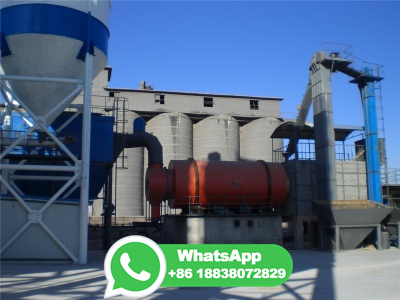
WEBNov 5, 2018 · The lump ore or pellet is transported into DRI plant by dump trucks. The iron raw material feeds the belt conveyor by wheel loader then delivered to the proportioning building. ... Compared with the traditional twostep method, the preheated pellets with certain intensity are directly delivered to the direct reduction furnace, which not only ...
WhatsApp: +86 18203695377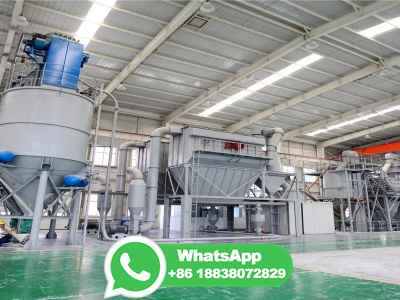
Agglomeration of Iron Ore. The three major forms of iron used in ironmaking are pellets, lump, and sinter. The major change in the past 50 years has been the development of costeffective pelletization technology allowing pellets to be a major source of iron oxide for ironmaking processes. From 1965 to 1985, the percentage of iron feed ...
WhatsApp: +86 18203695377
WEBSep 2, 2022 · The introduction of carbon (in the form of cementite) into directly reduced iron (DRI) is vital or desired even in the wake of the transition toward fossilfree iron production technology, where iron ore pellets are reduced only by hydrogen. It is essential for the smooth and efficient melting of DRI in steelmaking operations. One way to carburize DRI .
WhatsApp: +86 18203695377
WEBOct 1, 2018 · As such, numerous iron ore shaft furnace models have been proposed in the literature. Initial studies addressed the reduction of a single pellet by H 2, CO, or H 2CO mixtures [4,5,6,7,8,9]. Subsequent studies developed models that simulated the reduction zone of the shaft furnace in one dimension [10,11].
WhatsApp: +86 18203695377
WEBNov 3, 2021 · A DRI plant uses natural gas to reduce iron ore, resulting in a significant reduction in CO 2 emissions compared with coalbased blast furnace iron making. In Hamburg, Germany, ArcelorMittal is trialing replacing natural gas with hydrogen to make DRI, with its industrial scale pilot project anticipated to be commissioned before the end .
WhatsApp: +86 18203695377
WEBNov 10, 2023 · This product is known as Direct Reduced Iron (DRI) or Sponge Iron. Processes that produce iron by reduction of iron ore (in solid state) below the melting point are generally classified as DR ...
WhatsApp: +86 18203695377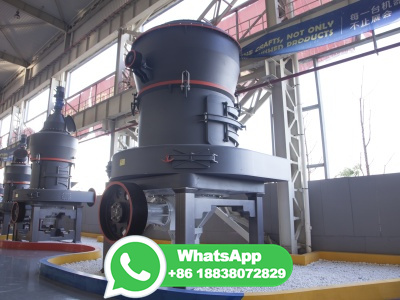
WEBDirectreduced iron (DRI), also called sponge iron, is produced from direct reduction of iron ore (in the form of lumps, pellets or fines) by a reducing gas produced from natural gas or coal. The reducing gas is a mixture majority of hydrogen (H2) and carbon monoxide (CO) which acts as reducing agent. This process of directly reducing the iron ...
WhatsApp: +86 18203695377
WEBJan 2, 2024 · Therefore, DRI is a generic term used for metallized products through reduction of iron ore in solid state (granules and pellets) in direct reduction reactors. It consists mainly of metallic iron, residual iron oxides (which do not were fully reduced in the reactor) and typical minor compounds such as silica, alumina, calcium.
WhatsApp: +86 18203695377
WEBMar 4, 2024 · The iron and steel manufacturing sector directly accounts for 7–9% of global CO2 emissions. Raw material preparation, such as iron ore sintering, pelletizing, and cock making, is the major CO2 emitter. As climate change becomes a bigger concern, steel manufacturers need to lower CO2 emissions without hindering efficiency or increasing .
WhatsApp: +86 18203695377
WEBNov 1, 2017 · The effects of biomass addition on iron ore pellets reduction and consequent reduction kinetics in simulated biomassderived syngas atmosphere were investigated. ... the understanding of the reduction behavior of iron ore/biomass composite pellets in the DRI route would be beneficial to the industrial implementation in producing DRI by using ...
WhatsApp: +86 18203695377
WEBDec 14, 2013 · Since DRI has become competitive with steel scrap, the gangue content of the DRI has to be reduced appreciably. The iron ore feeds for the DR processes normally contain less than 2 % silica and 1 % alumina. Moreover, certain additions of either limestone or dolomite are made to improve the behaviour of the iron ore pellets during .
WhatsApp: +86 18203695377
WEBNov 10, 2023 · The iron ore was successfully reduced to predominantly metallic iron phase when up to 30% by weight of biomass was introduced into the mixture. Reduction commenced at approximately 670°C and was ...
WhatsApp: +86 18203695377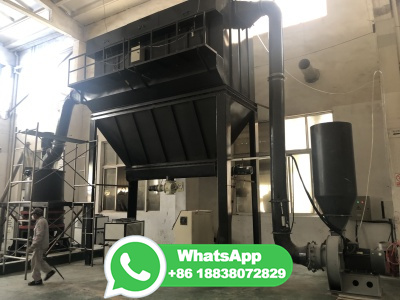
WEBAug 12, 2020 · This study aims to clarify the formation mechanism of pores in pellets, analyze the pore microstructure of pellets by advanced characterization methods and establish a reliability analysis between different characterization methods, which may provide new insights into the field of iron ore pellets.
WhatsApp: +86 18203695377
WEBApr 20, 2015 · Direct reduction of iron ore pellets (DRI) with and without biomass was studied using hydrogen as the reducing agent. ... (Barrett–Joyner–Halenda) method to illustrate the pore volume distribution. The ordinate (dV/dD) is the pore volume distribution function which represents the pore volume during this range. Download : Download full .
WhatsApp: +86 18203695377
WEBOct 1, 2023 · A 2D axisymmetric pellet grain model using the finite element method and considering the three reduction reactions and the mass and heat transfer phenomena was developed to evaluate the evolution of the solid transformations along the pellet radius during the reduction time. ... Partially reduced iron ore pellets, indied by the global ...
WhatsApp: +86 18203695377
WEBJan 1, 2022 · The standard and nonstandard testing methods developed to evaluate the ironbearing materials for use in these processes are also described and discussed. ... For achieving the high metallization required by DRI, the DR pellets and lump ore must have a good reducibility. Increasing reducing temperatures can promote reduction kinetics and ...
WhatsApp: +86 18203695377
WEBApr 22, 2024 · Moreover, the minimum strength requirement for iron ore pellets for blast furnaces (BF) and direct reduced iron (DRI) process is 250 kg/ pellet, represented by the dotted line (b) in Fig. 9 . The threshold CCS value of the magnetite pellet was obtained at 1000 °C with 5 min RT and attained kg/ pellet.
WhatsApp: +86 18203695377
WEBMay 25, 2022 · Platts DR pellet allin prices were assessed in May at /dry mt FOB Tubarao, Brazil, down from /dmt FOB in April, according to SP Global. While allin DR pellet prices are much lower than the /dmt FOB peak in July 2021, the spread between DR pellets with scrap, adjusted for quality, and with steel products, tightened ...
WhatsApp: +86 18203695377
WEBOct 28, 2022 · Assuming the complete reduction of two kinds of iron ore was achieved, the mole ratios of Fe 2 O 3 /H 2 and Fe 3 O 4 /H 2 are 1/3 and 1/4, respectively. Yet, the iron ore pellets are usually exposed to excessive pure H 2 in the actual process of HDRI. Thus, 4 calculation groups with various mole ratios of iron ore/H 2 are designed for the .
WhatsApp: +86 18203695377
WEBThe incremental iron ore demand of about 440 mt from increased DRI production could be met, assuming adequate replacement of depleted reserves. However, from the qualitative perspective, there is a potentially serious problem. ... Conversely, the quality of seaborne iron ore pellet feed and concentrates over the same period has remained rather ...
WhatsApp: +86 18203695377
WEBMay 20, 2022 · HBI is the product of reducing iron ore with natural gas. This is called the direct reduction process and is an environmentallyfriendly production process; a DRI plant uses natural gas which is more environmentally sound than coke. The reduction process takes place in the reduction tower. A tower is the heart of the plant.
WhatsApp: +86 18203695377
WEBOct 3, 2015 · Narcin et al. used Turkish lignite for reduction of iron ore pellets. They reached 93 % average metallization degree at 1000 °C and 90min residence time. Man et ... High reactivity of lignite char make it ideal for DRI process. One method of char generation is pyrolysis of lignite. Lowtemperature pyrolysis of coal is regarded as an .
WhatsApp: +86 18203695377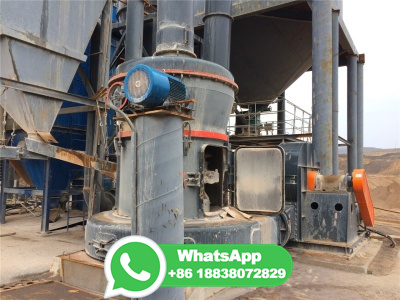
WEBNov 25, 2022 · Iron ore pellet reduction experiments were performed with pure hydrogen (H2) and mixtures with carbon monoxide (CO) at different ratios. For direct reduction processes that switch dynamically between reformed natural gas and hydrogen as the reductant, it is important to understand the effects of the transition on the oxide reduction .
WhatsApp: +86 18203695377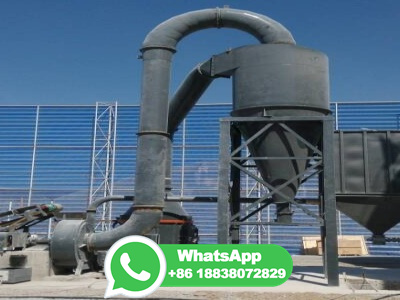
WEBNov 1, 2018 · For iron ore pellet feed preparation from fine iron ore concentrates, at sizes below 1. mm and generally at a high moisture content ranging between 7 % and 12 %, HPGR. has proven to be successful ...
WhatsApp: +86 18203695377
iron ore. any rocks, minerals or aggregates of minerals, natural or processed, from which iron can be produced commercially. Note 1 to entry: The principal ferriferous minerals occurring in iron ore either singly or severally are the following: a) red, brown and specular hematites, martite and maghemite;
WhatsApp: +86 18203695377